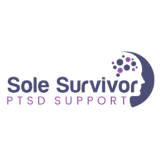This informal CPD article ‘Understanding PTSD Triggers: Supporting Clients Through Difficult Moments’, was provided by Matt Shepley, Founder of Sole Survivor PTSD Support CIC. They have been offering peer-led trauma-informed peer support and training services to organisations and communities since 2018, as well as a trauma-informed consultancy for companies of all sizes.
Understanding PTSD Triggers
Post-Traumatic Stress Disorder (PTSD) triggers are powerful reminders of past traumatic experiences that can evoke intense emotional and physical reactions in those who suffer from this condition. These triggers can manifest during therapy or support sessions, making it crucial for therapists and supporters to understand how to navigate these moments empathically and effectively. This article aims to inform readers about PTSD triggers, their manifestations during support sessions, and practical strategies for supporting clients effectively.
What is a PTSD Trigger?
A PTSD trigger is any stimulus – whether it's a sight, sound, smell, or even a certain feeling – that brings back memories of a traumatic event. These triggers can be highly individualised and may vary in intensity and effect from person to person. For someone with PTSD, encountering a trigger can lead to a range of reactions, from anxiety and panic attacks to flashbacks and hypervigilance.
Manifestation During a Support Session
During a support session, a PTSD trigger can present itself unexpectedly. For example, a particular phrase or topic discussed might inadvertently remind the client of their trauma, causing them to relive distressing memories. Physiological responses such as increased heart rate, sweating, or even dissociation could accompany these emotional reactions.
How to Work with a Client Who is Struggling
When a client is triggered during a support session, it's essential to respond calmly and compassionately:
- Recognise the Signs: Educate yourself about your client's triggers beforehand if possible and be attentive to signs of distress during sessions.
- Validate Their Experience: Acknowledge their feelings without judgment. Use statements like, "Understandably, you're feeling this way," to validate their emotions.
- Grounding Techniques: Guide the client through grounding exercises to help them reconnect with the present moment. Techniques such as deep breathing, focusing on sensory perceptions (e.g., naming things they can see or hear), or gentle physical movements can be effective.
- Respect Boundaries: Respect any boundaries the client sets during these moments. This might include giving them space or adjusting the conversation to a less triggering topic.
- Encourage Self-Care: Discuss self-care strategies they can use outside of sessions to manage triggers. This might include mindfulness practices, engaging in hobbies, or seeking additional support when needed.
Bringing Them Back to a Safe Space
Ultimately, the goal is to help the client return to a feeling of safety and stability:
Closure: Once the immediate crisis has passed, summarise what happened and reaffirm their safety in the present moment.
Reflect: Encourage reflection on how they navigated the trigger and explore any insights or coping strategies they used.
Future Sessions: Discuss any adjustments or strategies for future sessions to better manage triggers proactively.
By approaching PTSD triggers with empathy, understanding, and a structured response, we can all create an environment where clients feel validated and supported in their healing journey. Each interaction is an opportunity to foster trust and resilience, helping clients gradually regain a sense of control over their triggers and their lives.
In conclusion, navigating PTSD triggers in support sessions requires sensitivity and preparedness. Through education, empathy, and collaborative effort, we can effectively guide clients back to a place of safety, fostering healing and empowerment in the process.
We hope this article was helpful. For more information from Sole Survivor PTSD Support CIC, please visit their CPD Member Directory page. Alternatively, you can go to the CPD Industry Hubs for more articles, courses and events relevant to your Continuing Professional Development requirements.













